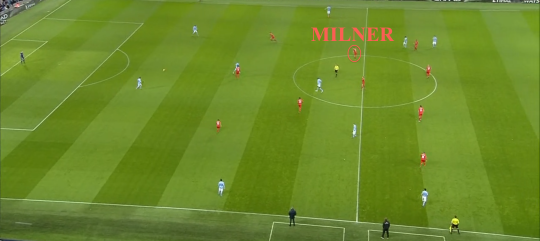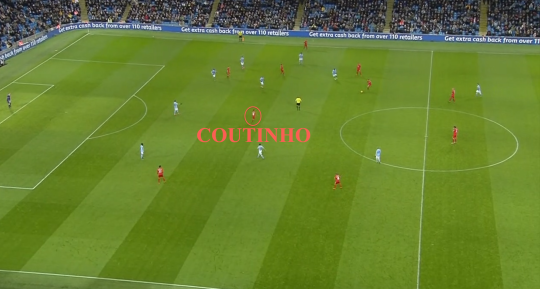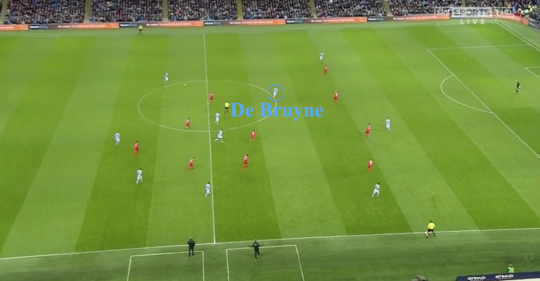Match date: 21 November 2015
Manuel Pellegrini’s had two early losses to West Ham United and Tottenham early on in the season, but have since had a good run of form despite consistent injuries to the likes of Vincent Kompany and Sergio Agüero.
For Liverpool, Jürgen Klopp’s appointment has been very positive, despite a loss to Crystal Palace in their last league match. Klopp’s style of play has been a welcome change change for Liverpool and helped the Merseyside club to a 3-1 win over Chelsea at Stamford Bridge a little less than a month ago.
For this game, Pellegrini set his side out in a 4-2-3-1 with Demichelis and Mangala at the back, with Kompany still out and Otamendi on the bench. Yaya Toure and Fernando anchored midfield, with Fernandinho also on the bench. Sterling, Navas, De Bruyne, and Agüero started in the front four.
Klopp made just one change to the side that beat Chelsea 3-1, with Dejan Lovren coming into the side in place of the injured Mamadou Sakho. Daniel Sturridge was fit enough for the bench and Christian Benteke also found himself on the bench.

Liverpool’s Pressing and Transitions
The most talked about part of Klopp’s style of play is the pressing. You have certainly seen the quotes about how Klopp believes that the act of pressing is the best playmaker in the world and against Manchester City you could see why Klopp holds this belief. Liverpool dominated the game because of their intensity, because they controlled the space, and because they pressed Manchester City well. In Liverpool’s 4-2-3-1, Roberto Firmino was supported by Coutinho, Lallana, and Milner and the quartet were energetic throughout the game in terms of their pressure on the Manchester City back line. The first and second goal are excellent examples of the workrate and pressing of Liverpool. On the first goal, Coutinho chases down at a pass from Joe Hart to Sagna, wins the ball from the French fullback, and dribbles at Demichelis before playing Firmino in behind, who tries to play the ball back to Coutinho, but Mangala puts it into his own net. Just before this, Lallana’s pressing forced Mangala to play the ball back to Hart. The second goal was similar as Firmino took advantage of mistakes by Demichelis and Mangala as they had to deal with a bouncing ball, only for the Brazilian to get on the ball and find Coutinho, who finished past Hart.

The pressing was good and for the most part and Liverpool had their most successful pressing on the right side of Manchester City’s back four. A lot of this could have been down to Milner playing narrow when Manchester City had the ball in their defensive third, making Liverpool look more like a 4-3-2-1/4-3-3. Liverpool looked to maintain a narrowness in midfield to outnumber Yaya Toure and Fernando, but also eliminate passes into the feet of De Bruyne and Agüero in central areas. When Manchester City did try to play out of the back and into the centre of midfield, it was a trigger for Liverpool players to press. With that said, Milner was excellent in sliding out to close down Kolarov when the ball was worked out to the Manchester City left back, but it was rare that the home side looked dangerous down the left side of their attack through Kolarov and Sterling. Below is an example of Milner tucked in alongside Lucas and the front three of Coutinho, Firmino, and Lallana. Also notice that the central passing lanes for Manchester City are crowded out and that Agüero and De Bruyne are forced into wider positions, but are not wide enough to really be considering a safe passing option.

As good as Liverpool’s pressing was, their transitions were excellent. When Liverpool lost the ball, they were quickly surrounding the Manchester City ball carrier to win it back and when they did, Liverpool players quickly broke forward and it was this latter transition that caught Manchester City out. The third goal was an excellent example of this as Miner wins the ball back for Liverpool at the edge of their own penalty area, combines with Firmino, and then is pushing forward with the support of Coutinho, Can, and Moreno and then score within about 15 seconds of winning the ball back. Liverpool were direct and incredibly quick to support their attacks. Firmino was given a very free role, playing as a false nine, and was usually the furthest forward, darting in and out of spaces. The pace at which Liverpool attacked Manchester City was too much for the home side.

Manchester City’s Midfield and Defense
The success of Liverpool was due in large part to the failures of Manuel Pellegrini’s team selection and Manchester City’s shape. The likes of Otamendi and Fernandinho were not selected in the starting XI due to their involvement and travel to games in South America over the international break, however, it left Pellegrini with a starting midfield pairing of Yaya Toure and Fernando. Up against Can, Milner, Firmino, Lallana, and Coutinho, the Manchester City duo were always going to struggle to keep up with the Liverpool midfielders. Combine this with the high and wide positioning of Navas and Sterling and the free movement of De Bruyne and it is clear that Liverpool were able to overrun Fernando and Toure easily before creating havoc for Demichelis and Mangala with their forward movement. Below is a screen capture from just before Liverpool’s second goal. Liverpool are in transition, but Yaya Toure and Fernando are high up the pitch.

Fernandinho would have been a player that would have been able to keep pace with Liverpool’s transitions and not allowed such a huge gap to open up between the midfield and the back four. This gap became increasingly easier for Liverpool to exploit as the game went on, not only during these quick transitions, but in fairly paced build-up play. With Firmino dropping off into the space between the lines and Coutinho finding space here as well, there was no Manchester City player really willing to close them down. Below is a screen capture of Coutinho finding the ball in these pockets of space between the Manchester City midfield and back four.

It is in these spaces that Fernando or Yaya Toure should have been, but is also an area of the pitch that Otamendi would have been willing to step into to mark Coutinho or Firmino. Demichelis and Mangala were unwilling to do so and this is what has allowed the false 9 system to work; centre backs don’t have a player to pick up, but are too slow to react to the movement of players from the halfspaces or wide areas into the middle of the pitch. Without a player to consistently mark and a player that would have stayed mostly central, as they would have had against Benteke, Demichelis and Mangala were dragged out of position by the interchange of Coutinho, Lallana, and Firmino.
While Liverpool had an excellent team performance, Coutinho, Lallana, and Firmino really stuck out in terms of Liverpool’s attacking threats. Coutinho and Firmino both scored a goal and assisted one another as their link up play was excellent, particularly in the space between the lies. The narrowness of the front three allowed Liverpool to have numbers up against the Manchester City centre backs. When Liverpool had the ball and were going forward, the front three of Liverpool, already narrow, made runs directly at the Manchester City centre backs and, as mentioned before, Demichelis and Mangala were not supported well by Fernando or Toure.
Liverpool also found these overloads in the wide areas of the pitch. They had excellent, intricate passing in those areas of the pitch as the full backs, front three, and then Milner or Can would come over as well. It was another aspect of play that was similar to Klopp’s Dortmund at their peak; when they overload the wide areas and played quickly through the defenders as they worked centrally.

Manchester City Fail to Adjust
There are a few points to be made about Pellegrini’s tactics, the first being the personnel on the pitch. Toure and Fernando were not the best centre midfield pairing considering the energy and dynamism of Liverpool’s midfield and forward lines and as mentioned, they were often overrun by Liverpool’s midfield. However, there were adjustments that could have been made that would have allowed Manchester City to get back into the game. With Liverpool’s midfield so narrow, City should have been trying to play into the wide areas much quicker. The ball movement, however, was incredibly slow and this allowed Liverpool to easily shift from side to side as Manchester City moved the ball. Had the ball movement been quicker and Liverpool been caught out, generally, Manchester City could have been in 2v1 situations in the wide areas against Moreno and Clyne for much of the night. There were some signs of City attacking the wide areas early on, particularly when De Bruyne drifted into the right channel and found himself isolated against Lovren on two or three occasions, but City failed to capitalise on these instances.
There were also times when the Manchester City ball movement could have been quicker and exploited the spaces opened up by Liverpool’s press. The space between the lines was certainly a factor for Liverpool’s dominance, but De Bruyne found himself in similar positions for Manchester City, but they were unable to get him the ball quick enough for those positions to be dangerous.

Conclusion
Liverpool were the better team and Pellegrini’s changes came too late to have any real impact on the game. Jurgen Klopp had an excellent plan going into the game and it was executed almost to perfection (he said it was a very good performance, but not perfect). If Liverpool and Klopp are able to continue with these sort of performances, and do so consistently, they could be well within the top four by the end of the season.
While this performance was very poor for Manchester City, and a lot of the blame can be put on Pellegrini for his selections, he was also without his two first choice centre backs (Kompany injured and Otamendi on the bench due to travel), without Fernandinho (on the bench due to travel), without David Silva, and without a fully fit Agüero. This was very poor for Manchester City, but there were no real alarmingly aspects to the performance that will carry on to others.
Peter Motzenbecker
Latest posts by Peter Motzenbecker (see all)
- Liverpool vs Manchester City: Tactical Analysis - January 17, 2018
- The Manchester Derby: Post-Match Tactical Analysis - September 13, 2016
- Arsenal vs Liverpool: The Tactical View - August 17, 2016
